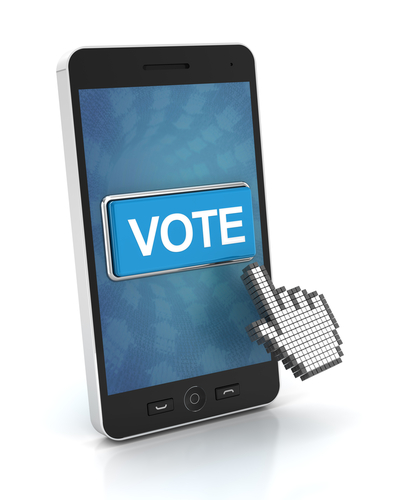
In a recent TechCrunch article, author Nic Denholm compared television ad spending among the political candidates in this year’s presidential election.
According to Denholm, and figures from CNN, Donald Trump secured 234 minutes of airtime between January and November of last year; he spent less than $25,000 to do it. Meanwhile, Jeb Bush got a measly 56 minutes of coverage during the same period, and spent more than $40 million dollars.
From Denholm’s article, “…that equates to $94 for every minute of Trump coverage, versus $714,000 for every minute of Bush coverage. Ninety-four dollars!”
Trump’s organic airtime doesn’t prove much with regard to how technology will engage voters as we dig into the primaries, but it does illustrate a significant change in the way candidates effectively reach voters, as they move from one stationary screen to smaller screens on the go.
Just a Few Years Ago…
Digital technology was a major component of President Barack Obama’s election success in both 2008 and 2012. Mass text messaging replaced automated dialers in an effort to reach people where they were, and social media helped candidates isolate perspective voters with new analytical tools.
Since 2012, mobile internet use has surpassed usage on desktop computers. If voters want information, political or otherwise, they’re looking for it on their phones. And they’re not just looking for information; they’re creating it as well, sharing content on mobile channels like Facebook, Twitter, and Snapchat, which many new opportunities to showcase unbridled political speech in niche corners of the web not formerly cultivated by either party.
The amount of big data available also affects how the current candidates interact with mobile users, when and where they reach them, and what kind of messaging they use. For example, Facebook offers tools that allow campaigners to create look-alike lists of current supporters, which are simply made by uploading supporters’ email addresses into a program that analyzes what people share and how they interact with other content on Facebook. Facebook’s Ad Manager can target voters by location, age, gender, and even what Pages they like.
Mobile Savvy Users
Voters’ tolerance for campaign ads is another story. Andrew Lipsman of comScore, a digital analytics company said, “People are used to ads now, but if it's clear that you are hyper targeting this person, that's where you might get people to start to cringe a little bit.”
In other words, just because a candidate knows more about their voters, where to find them, and when to reach out, doesn’t mean that spamming them with political content is a good idea. And that may be something we observe this election year, as we watch candidates dig deeper into the mobile space of voters, praying on their data to make sense of something the “boob tube” never could.
Ignoring mobile technology is a mistake this election year. From grassroots fundraising to political propaganda, the application of mobile tech is far-reaching and less avoidable than it was four years ago. The real question is, what mobile tactics will work and what won’t?
As Denholm pointed out, the victory margin of presidential candidates over the last 30 years has been no more than 8.5 percent. The stakes have never been higher, and yet, in some ways, we and the candidates have no idea what’s going on or how it will influence the election.